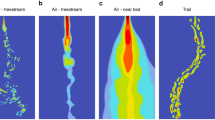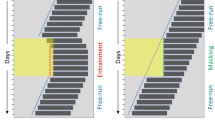Abstract
Adult male mice emit highly complex ultrasonic vocalizations (USVs) in response to female conspecifics. Such USVs, thought to facilitate courtship behaviors, are routinely measured as a behavioral index in mouse models of neurodevelopmental and psychiatric disorders such as autism. While the regulation of USVs by genetic factors has been extensively characterized, the neural mechanisms that control USV production remain largely unknown. Here, we report that optogenetic activation of the medial preoptic area (mPOA) elicited the production of USVs that were acoustically similar to courtship USVs in adult mice. Moreover, mPOA vesicular GABA transporter-positive (Vgat +) neurons were more effective at driving USV production than vesicular glutamate transporter 2-positive neurons. Furthermore, ablation of mPOA Vgat+ neurons resulted in altered spectral features and syllable usage of USVs in targeted males. Together, these results demonstrate that the mPOA plays a crucial role in modulating courtship USVs and this may serve as an entry point for future dissection of the neural circuitry underlying USV production.






Similar content being viewed by others
References
Egnor SR, Seagraves KM. The contribution of ultrasonic vocalizations to mouse courtship. Curr Opin Neurobiol 2016, 38: 1–5.
Heckman J, McGuinness B, Celikel T, Englitz B. Determinants of the mouse ultrasonic vocal structure and repertoire. Neurosci Biobehav Rev 2016, 65: 313–325.
Portfors CV, Perkel DJ. The role of ultrasonic vocalizations in mouse communication. Curr Opin Neurobiol 2014, 28: 115–120.
Nyby J, Wysocki CJ, Whitney G, Dizinno G. Pheromonal regulation of male mouse ultrasonic courtship (Mus musculus). Anim Behav 1977, 25: 333–341.
Whitney G, Coble JR, Stockton MD, Tilson EF. Ultrasonic emissions: do they facilitate courtship of mice. J Comp Physiol Psychol 1973, 84: 445–452.
Bean NJ. Olfactory and vomeronasal mediation of ultrasonic vocalizations in male mice. Physiol Behav 1982, 28: 31–37.
Holy TE, Guo Z. Ultrasonic songs of male mice. PLoS Biol 2005, 3: e386.
Pomerantz SM, Nunez AA, Bean NJ. Female behavior is affected by male ultrasonic vocalizations in house mice. Physiol Behav 1983, 31: 91–96.
Shepard KN, Liu RC. Experience restores innate female preference for male ultrasonic vocalizations. Genes Brain Behav 2011, 10: 28–34.
Hammerschmidt K, Radyushkin K, Ehrenreich H, Fischer J. Female mice respond to male ultrasonic ‘songs’ with approach behaviour. Biol Lett 2009, 5: 589–592.
Chabout J, Sarkar A, Dunson DB, Jarvis ED. Male mice song syntax depends on social contexts and influences female preferences. Front Behav Neurosci 2015, 9: 76.
Asaba A, Osakada T, Touhara K, Kato M, Mogi K, Kikusui T. Male mice ultrasonic vocalizations enhance female sexual approach and hypothalamic kisspeptin neuron activity. Horm Behav 2017, 94: 53–60.
Maggio JC, Whitney G. Ultrasonic vocalizing by adult female mice (Mus musculus). J Comp Psychol 1985, 99: 420–436.
Hammerschmidt K, Radyushkin K, Ehrenreich H, Fischer J. The structure and usage of female and male mouse ultrasonic vocalizations reveal only minor differences. PLoS One 2012, 7: e41133.
Neunuebel JP, Taylor AL, Arthur BJ, Egnor SE. Female mice ultrasonically interact with males during courtship displays. Elife 2015, 4. https://doi.org/10.7554/eLife.06203.
Arriaga G, Zhou EP, Jarvis ED. Of mice, birds, and men: the mouse ultrasonic song system has some features similar to humans and song-learning birds. PLoS One 2012, 7: e46610.
Hammerschmidt K, Reisinger E, Westekemper K, Ehrenreich L, Strenzke N, Fischer J. Mice do not require auditory input for the normal development of their ultrasonic vocalizations. BMC Neurosci 2012, 13: 40.
Mahrt EJ, Perkel DJ, Tong L, Rubel EW, Portfors CV. Engineered deafness reveals that mouse courtship vocalizations do not require auditory experience. J Neurosci 2013, 33: 5573–5583.
Scattoni ML, Gandhy SU, Ricceri L, Crawley JN. Unusual repertoire of vocalizations in the BTBR T + tf/J mouse model of autism. PLoS One 2008, 3: e3067.
Zampieri BL, Fernandez F, Pearson JN, Stasko MR, Costa AC. Ultrasonic vocalizations during male-female interaction in the mouse model of Down syndrome Ts65Dn. Physiol Behav 2014, 128: 119–125.
Choi H, Park S, Kim D. Two genetic loci control syllable sequences of ultrasonic courtship vocalizations in inbred mice. BMC Neurosci 2011, 12: 104.
Wang H, Liang S, Burgdorf J, Wess J, Yeomans J. Ultrasonic vocalizations induced by sex and amphetamine in M2, M4, M5 muscarinic and D2 dopamine receptor knockout mice. PLoS One 2008, 3: e1893.
Jiang YH, Pan Y, Zhu L, Landa L, Yoo J, Spencer C, et al. Altered ultrasonic vocalization and impaired learning and memory in Angelman syndrome mouse model with a large maternal deletion from Ube3a to Gabrb3. PLoS One 2010, 5: e12278.
Sugimoto H, Okabe S, Kato M, Koshida N, Shiroishi T, Mogi K, et al. A role for strain differences in waveforms of ultrasonic vocalizations during male-female interaction. PLoS One 2011, 6: e22093.
Panksepp JB, Jochman KA, Kim JU, Koy JJ, Wilson ED, Chen Q, et al. Affiliative behavior, ultrasonic communication and social reward are influenced by genetic variation in adolescent mice. PLoS One 2007, 2: e351.
Gaub S, Fisher SE, Ehret G. Ultrasonic vocalizations of adult male Foxp2-mutant mice: behavioral contexts of arousal and emotion. Genes Brain Behav 2016, 15: 243–259.
Wohr M. Ultrasonic vocalizations in Shank mouse models for autism spectrum disorders: detailed spectrographic analyses and developmental profiles. Neurosci Biobehav Rev 2014, 43: 199–212.
Castellucci GA, McGinley MJ, McCormick DA. Knockout of Foxp2 disrupts vocal development in mice. Sci Rep 2016, 6: 23305.
Ju A, Hammerschmidt K, Tantra M, Krueger D, Brose N, Ehrenreich H. Juvenile manifestation of ultrasound communication deficits in the neuroligin-4 null mutant mouse model of autism. Behav Brain Res 2014, 270: 159–164.
Chabout J, Sarkar A, Patel SR, Radden T, Dunson DB, Fisher SE, et al. A Foxp2 mutation implicated in human speech deficits alters sequencing of ultrasonic vocalizations in adult male mice. Front Behav Neurosci 2016, 10: 197.
Yu X, Qiu Z, Zhang D. Recent research progress in autism spectrum disorder. Neurosci Bull 2017, 33: 125–129.
Masi A, DeMayo MM, Glozier N, Guastella AJ. An overview of autism spectrum disorder, heterogeneity and treatment options. Neurosci Bull 2017, 33: 183–193.
Scattoni ML, Crawley J, Ricceri L. Ultrasonic vocalizations: a tool for behavioural phenotyping of mouse models of neurodevelopmental disorders. Neurosci Biobehav Rev 2009, 33: 508–515.
Zala SM, Reitschmidt D, Noll A, Balazs P, Penn DJ. Sex-dependent modulation of ultrasonic vocalizations in house mice (Mus musculus musculus). PLoS One 2017, 12: e0188647.
Grimsley JM, Sheth S, Vallabh N, Grimsley CA, Bhattal J, Latsko M, et al. Contextual modulation of vocal behavior in mouse: newly identified 12 kHz “mid-frequency” vocalization emitted during restraint. Front Behav Neurosci 2016, 10: 38.
Hoier S, Pfeifle C, von Merten S, Linnenbrink M. Communication at the garden fence–context dependent vocalization in female house mice. PLoS One 2016, 11: e0152255.
Yang M, Loureiro D, Kalikhman D, Crawley JN. Male mice emit distinct ultrasonic vocalizations when the female leaves the social interaction arena. Front Behav Neurosci 2013, 7: 159.
Scattoni ML, Ricceri L, Crawley JN. Unusual repertoire of vocalizations in adult BTBR T + tf/J mice during three types of social encounters. Genes Brain Behav 2011, 10: 44–56.
D’Amato FR, Moles A. Ultrasonic vocalizations as an index of social memory in female mice. Behav Neurosci 2001, 115: 834–840.
Nyby J, Dizinno GA, Whitney G. Social status and ultrasonic vocalizations of male mice. Behav Biol 1976, 18: 285–289.
Holfoth DP, Neilans EG, Dent ML. Discrimination of partial from whole ultrasonic vocalizations using a go/no-go task in mice. J Acoust Soc Am 2014, 136: 3401–3409.
Arriaga G, Jarvis ED. Mouse vocal communication system: are ultrasounds learned or innate? Brain Lang 2013, 124: 96–116.
Wei YC, Wang SR, Jiao ZL, Zhang W, Lin JK, Li XY, et al. Medial preoptic area in mice is capable of mediating sexually dimorphic behaviors regardless of gender. Nat Commun 2018, 9: 279.
Chao HT, Chen H, Samaco RC, Xue M, Chahrour M, Yoo J, et al. Dysfunction in GABA signalling mediates autism-like stereotypies and Rett syndrome phenotypes. Nature 2010, 468: 263–269.
Chabout J, Jones-Macopson J, Jarvis ED. Eliciting and analyzing male mouse ultrasonic vocalization (USV) songs. J Vis Exp 2017, 123: 54137. https://doi.org/10.3791/54137.
Weiner B, Hertz S, Perets N, London M. Social ultrasonic vocalization in awake head-restrained mouse. Front Behav Neurosci 2016, 10: 236.
White NR, Prasad M, Barfield RJ, Nyby JG. 40- and 70-kHz vocalizations of mice (Mus musculus) during copulation. Physiol Behav 1998, 63: 467–473.
Matsumoto YK, Okanoya K. Phase-specific vocalizations of male mice at the initial encounter during the courtship sequence. PLoS One 2016, 11: e0147102.
Vong L, Ye C, Yang Z, Choi B, Chua S Jr, Lowell BB. Leptin action on GABAergic neurons prevents obesity and reduces inhibitory tone to POMC neurons. Neuron 2011, 71: 142–154.
Bean NY, Nunez AA, Conner R. Effects of medial preoptic lesions on male mouse ultrasonic vocalizations and copulatory behavior. Brain Res Bull 1981, 6: 109–112.
Matochik JA, Sipos ML, Nyby JG, Barfield RJ. Intracranial androgenic activation of male-typical behaviors in house mice: motivation versus performance. Behav Brain Res 1994, 60: 141–149.
Sipos ML, Nyby JG. Concurrent androgenic stimulation of the ventral tegmental area and medial preoptic area: synergistic effects on male-typical reproductive behaviors in house mice. Brain Res 1996, 729: 29–44.
Han Y, Li XY, Wang SR, Wei YC, Xu XH. Presence of pups suppresses hunger-induced feeding in virgin adult mice of both sexes. Neuroscience 2017, 362: 228–238.
Zha X, Xu X. Dissecting the hypothalamic pathways that underlie innate behaviors. Neurosci Bull 2015, 31: 629–648.
Newman SW. The medial extended amygdala in male reproductive behavior. A node in the mammalian social behavior network. Ann N Y Acad Sci 1999, 877: 242–257.
O’Connell LA, Hofmann HA. Evolution of a vertebrate social decision-making network. Science 2012, 336: 1154–1157.
Liu HX, Lopatina O, Higashida C, Fujimoto H, Akther S, Inzhutova A, et al. Displays of paternal mouse pup retrieval following communicative interaction with maternal mates. Nat Commun 2013, 4: 1346.
Kohl J, Babayan BM, Rubinstein ND, Autry AE, Marin-Rodriguez B, Kapoor V, et al. Functional circuit architecture underlying parental behaviour. Nature 2018, 556: 326–331.
Menuet C, Cazals Y, Gestreau C, Borghgraef P, Gielis L, Dutschmann M, et al. Age-related impairment of ultrasonic vocalization in Tau.P301L mice: possible implication for progressive language disorders. PLoS One 2011, 6: e25770.
Esposito A, Demeurisse G, Alberti B, Fabbro F. Complete mutism after midbrain periaqueductal gray lesion. Neuroreport 1999, 10: 681–685.
Tschida K, Michael V, Han BX, ZHao Sl, Sakurai K, Mooney R, et al. Identification of midbrain neurons essential for vocal communication. BioRxiv 2018.
Petkov CI, Jarvis ED. Birds, primates, and spoken language origins: behavioral phenotypes and neurobiological substrates. Front Evol Neurosci 2012, 4: 12.
Acknowledgements
We thank members of the Xu’s lab for comments on this manuscript, and Dr. Hai-Lan Hu’s lab for help with USV equipment. This work was supported by grants from the National Natural Science Foundation of China (31871066, 31471065), the National Basic Research Development Program (973 Program) of China (2015CB559201), the Thousand Young Talents Program of China, the Strategic Priority Research Program of the Chinese Academy of Sciences (XDB32010200), and as part of the Chinese Academy of Science interdisciplinary innovation team.
Author information
Authors and Affiliations
Corresponding authors
Ethics declarations
Conflict of interest
The authors claim no conflict of interest.
Rights and permissions
About this article
Cite this article
Gao, SC., Wei, YC., Wang, SR. et al. Medial Preoptic Area Modulates Courtship Ultrasonic Vocalization in Adult Male Mice. Neurosci. Bull. 35, 697–708 (2019). https://doi.org/10.1007/s12264-019-00365-w
Received:
Accepted:
Published:
Issue Date:
DOI: https://doi.org/10.1007/s12264-019-00365-w




